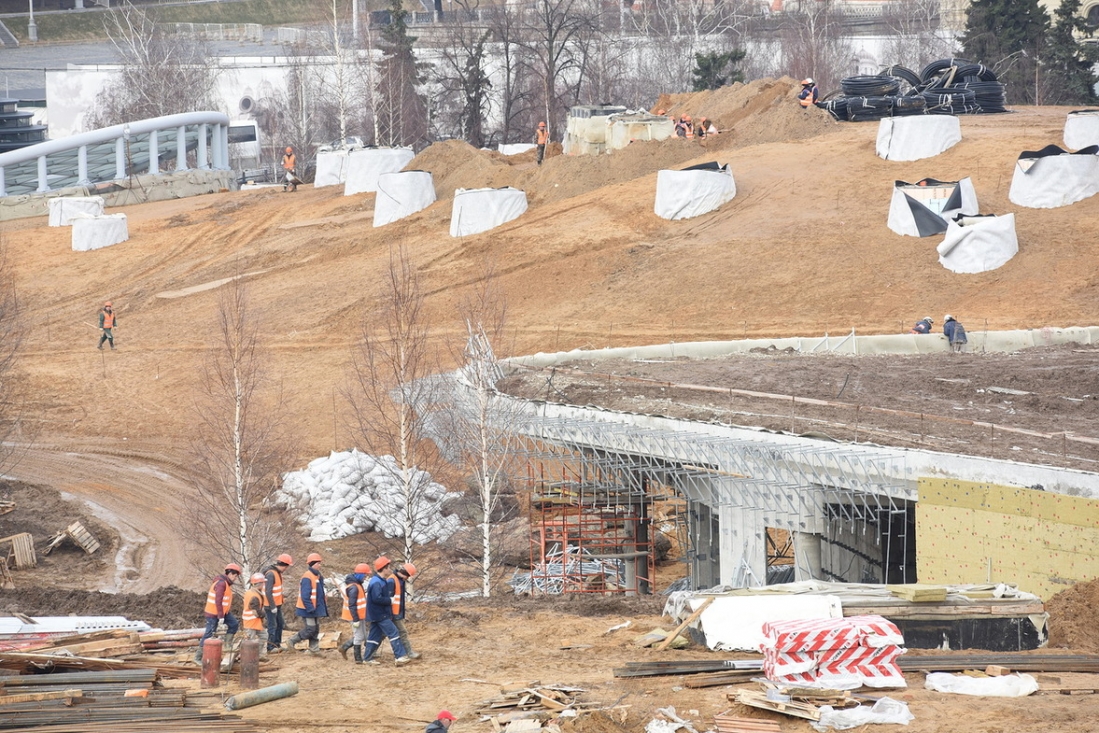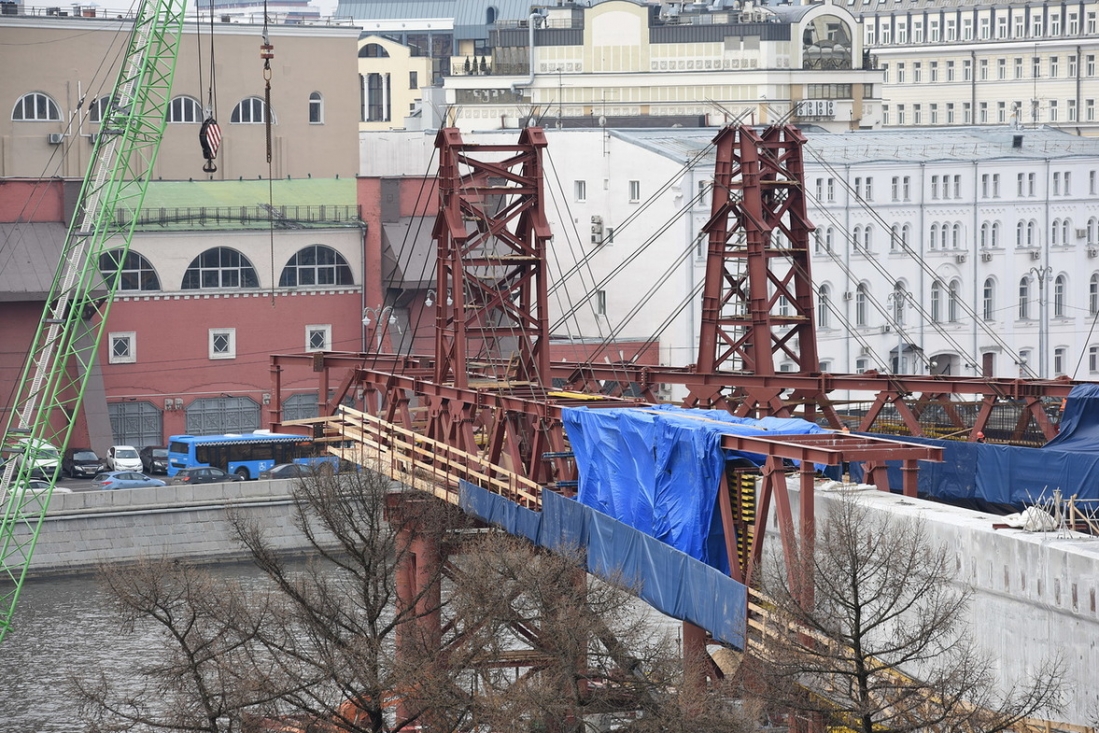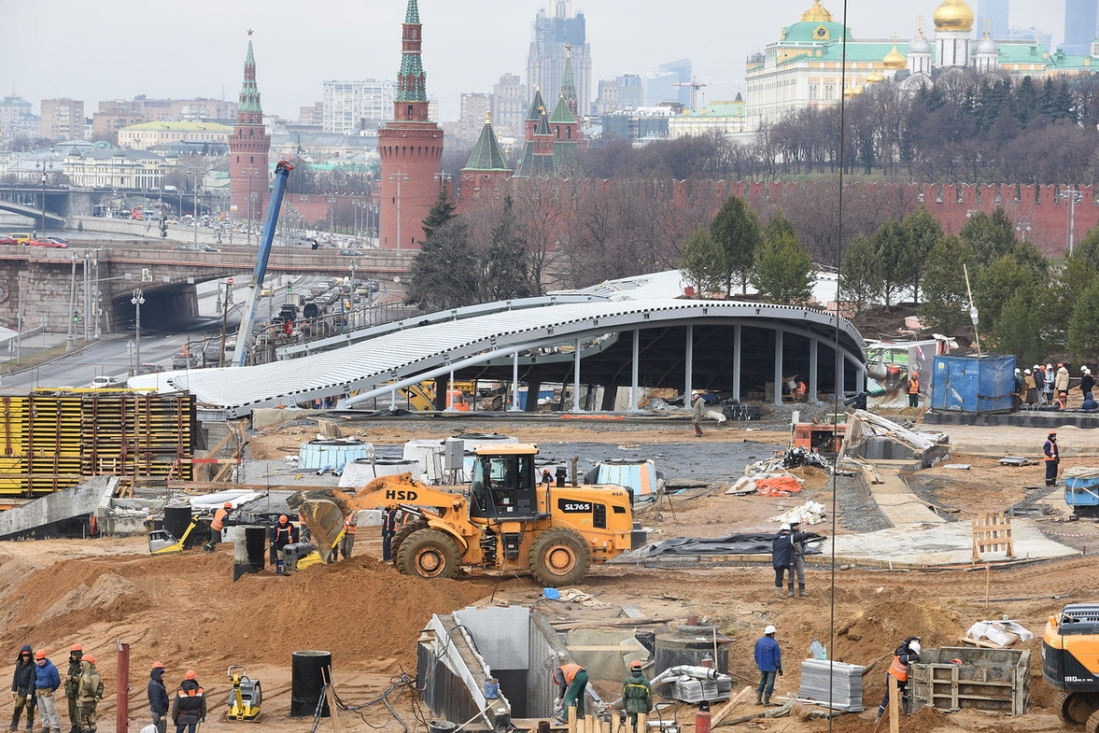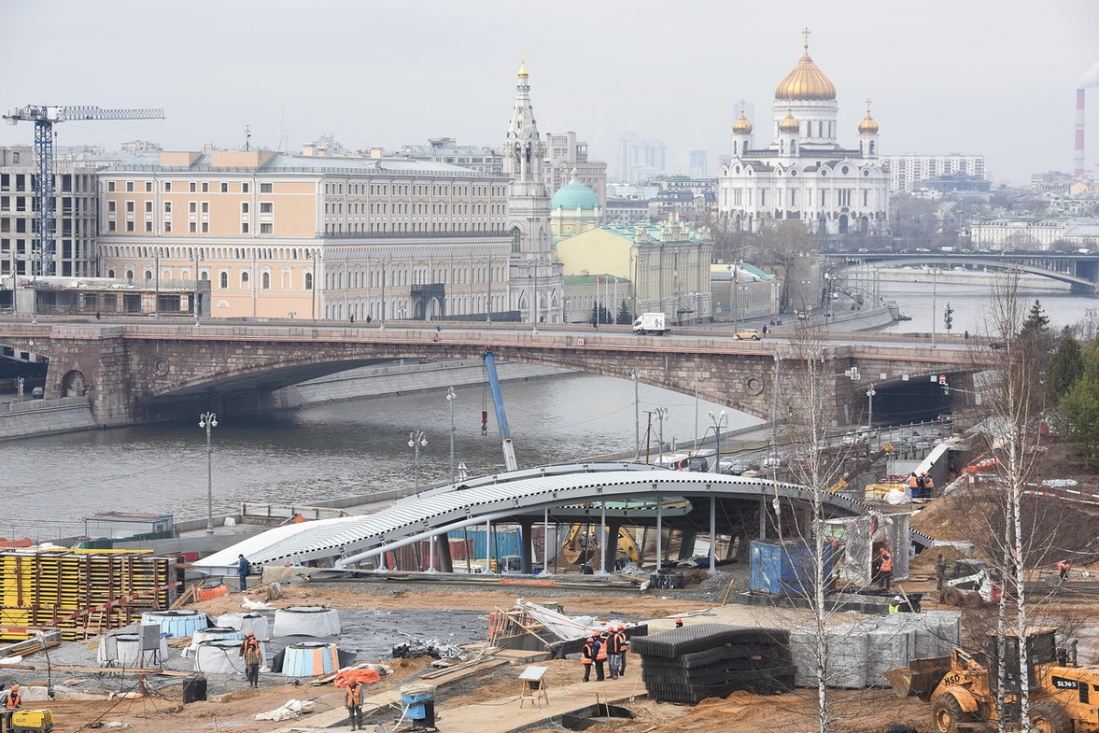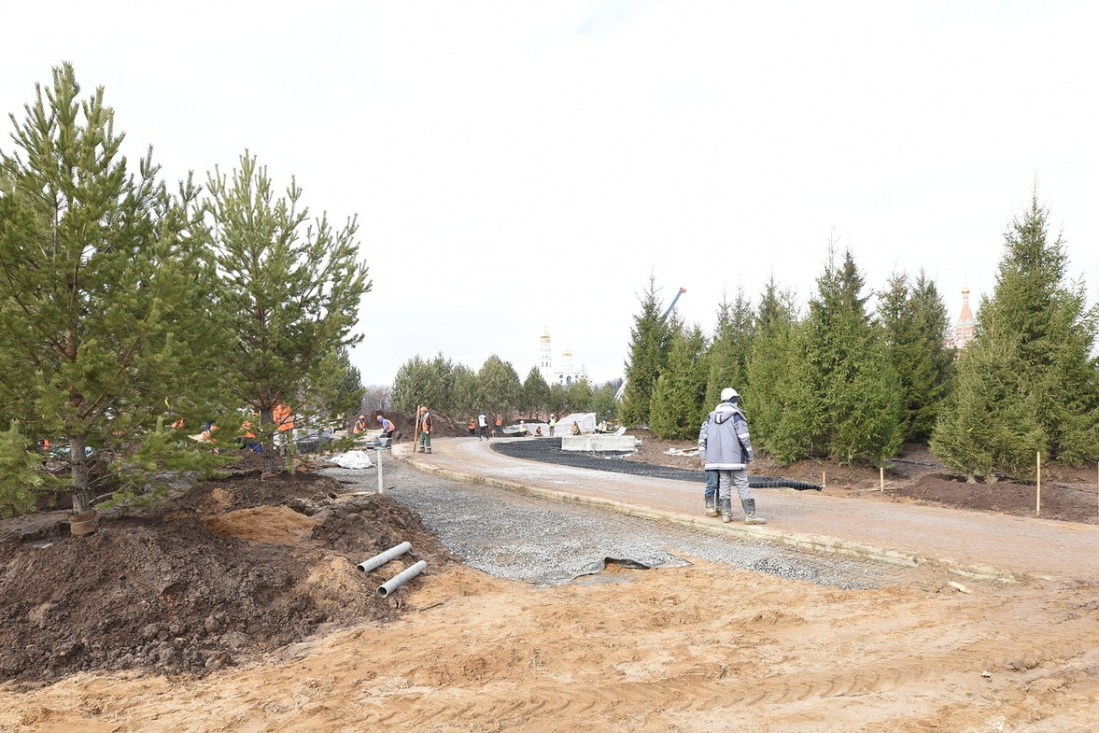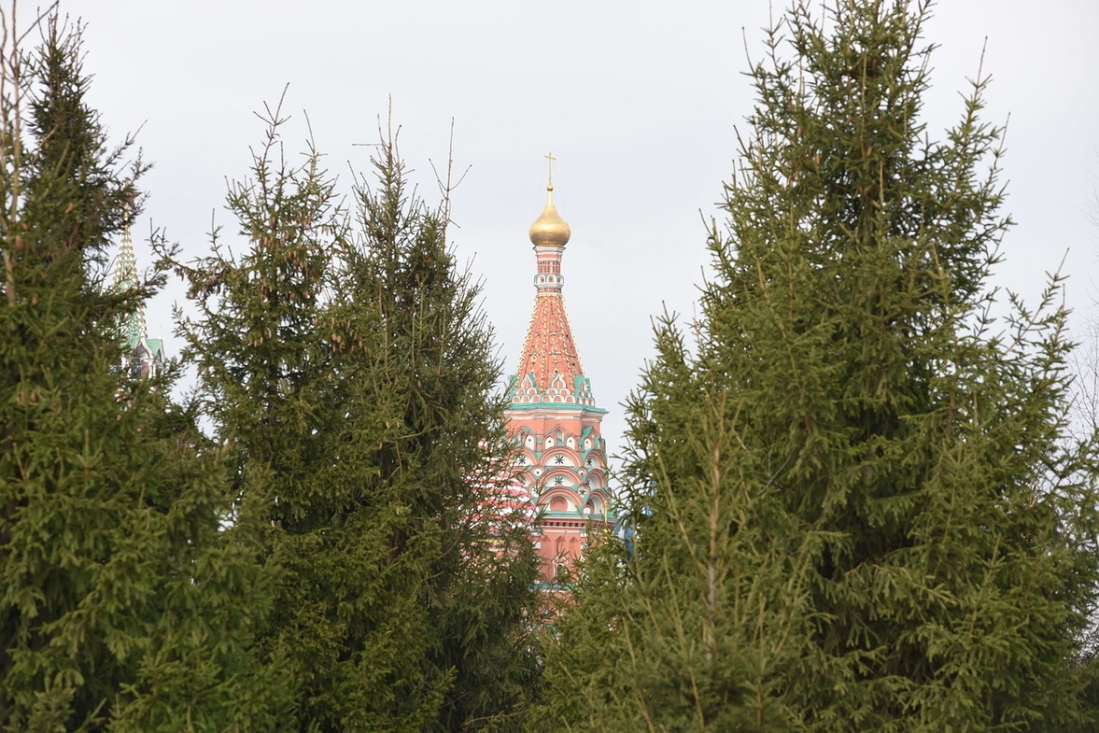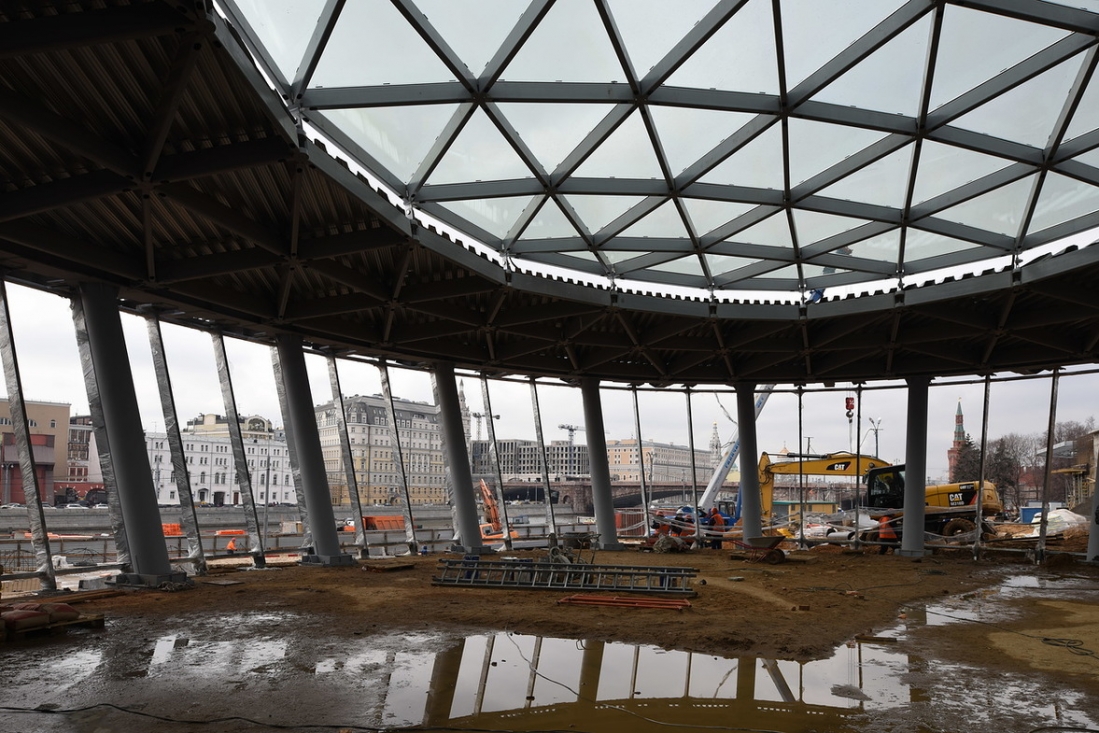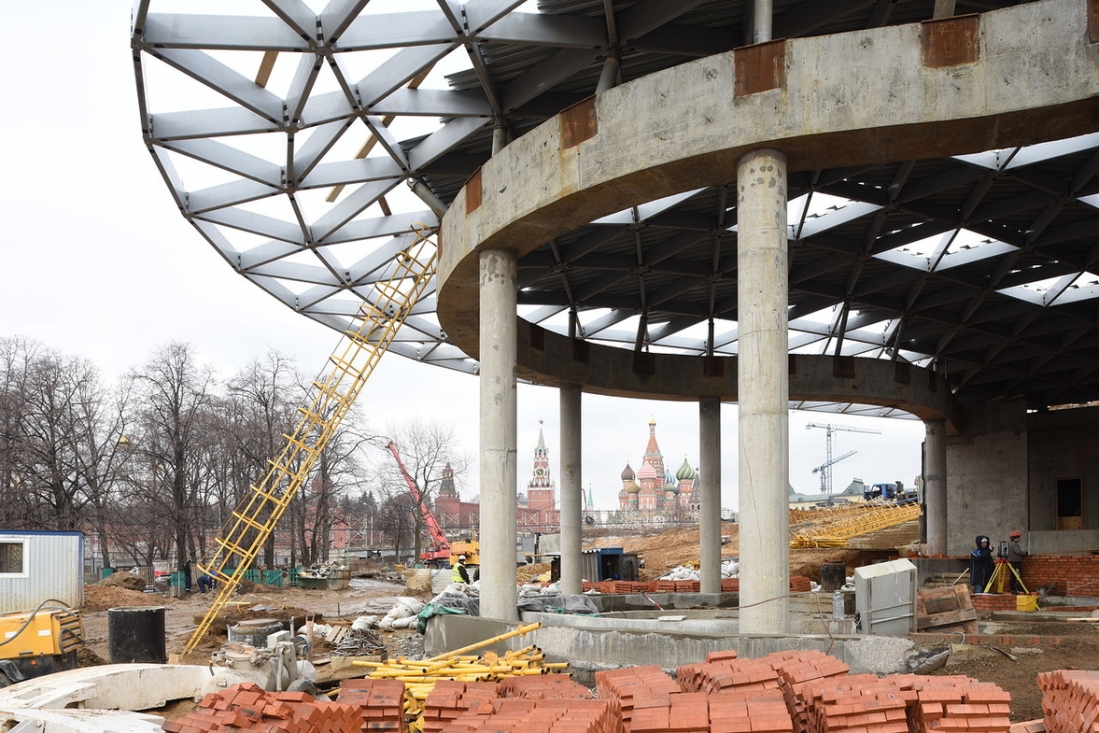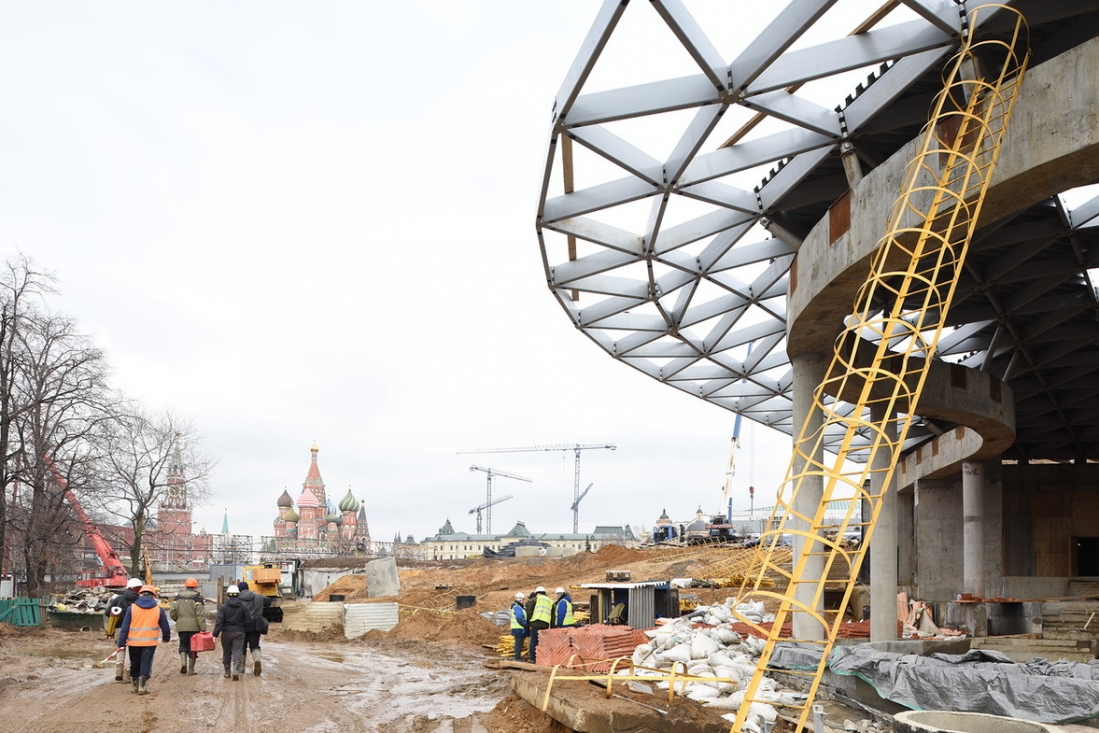DS+R: In Zaryadye, We Need a Hybrid of Paved and Green Landscape
The Moscow team of designers and contractors met again with the American colleagues, the authors of the unique concept, Diller Scofidio + Renfro and Hargreaves Jones — took place in the Zaryadye Park, who are likely to provide author’s follow-up and counseling up to the very opening scheduled for this September.
We are talking to a partner Diller Scofidio + Renfro, Charles Renfro, and a partner of Hargreaves Jones, Mary Margaret Jones.
— What is the purpose of your visit this time? As far as I remember, the last time you were here in September.
Charles Renfro: Yes, as you know, the consortium, which includes Diller Scofidio + Renfro, Hargreaves Jones and the Moscow studio Citymakers is preparing the master plan of the park and its detailed concept. Our local partners: Mosinzhproekt, MAHPI and TPO Reserv, who are in charge of the Philharmonic, are working on the design and implementation of the project. At this stage, we monitor the construction works and provide author’s follow-up: we are now more likely to be consultants than designers. Therefore, we periodically come to make sure that the basic principles of the concept are observed, and the possible deviations do not go against the original idea.
— The Park’s landscape is complete. What do you think about it?
Charles Renfro: As far as I could see, subgrading was completed, but not landscaping. We continue to monitor the landscaping and provide counselling on creating a mixed flora for four different zones reflecting the natural areas of the Russian landscape. We are working with local designers and contractors to ensure the adequacy of this process.
Mary Margaret Jones: The works are in full swing, and we are pleased to see how the new topography creates the effect of moving through space that constantly changes and creates different images before you: open spaces flow into secluded corners and the landscaping helps to emphasize this diversity. Now we are working on shaping several hills: we want to make them more accentuated.
— What could you advise or recommend for the project progress?
Charles Renfro: This time we focused on the landscape, the green plantations of the park and the requirements of the concept we proposed. The idea of natural urbanism requires a qualitatively new method of combining paving and greenery. In cooperation with local architects and builders, we found the best combination. This is why we came.
Mary Margaret Jones: We want to achieve a perfect integration and interaction of the artificial surface and vegetation, so that there are no sharp boundaries between them, so that the visitor could see a dynamically changing landscape that harmoniously combines solid covering and greenery rather than a road and plants.
We also work on selecting species of trees that can co-exist in one place. Moreover, we would like to move some trees that were planted. To do this, you need a special transplant machine, which «scoops up» the tree as an ice cream ball and allows transferring it to a new location with minimal damage to the root system. We hope our colleagues will find an opportunity to use such a machine.
— What difficulties are there in the implementation of the concept at this stage?
Charles Renfro: I think the difficulty is to find a way to connect the paved surface and the greenery without sharp boundaries. We need a hybrid of a pavement and vegetation. This is the difficulty of park design. I hope that together we will be able to find the best solution.
Mary Margaret Jones: An artificial cover must have a substrate and it is difficult to give it a natural shape, because the green cover cannot be densely packed. We need organic soil where moisture freely circulates and the roots of trees can develop, which involves the creation of two systems: a rigid one and a flexible one. Such systems are created every time from scratch and manually, as a rule. But as far as I understand, now there are no problems with this, and everything should turn out just fine.
You know, we have this expression: «the devil is in the detail».... This is the stage we are on now. Many things that seemed insignificant six months ago have now come to the fore. The concept is unique: the integration of buildings, surfaces and landscapes is unique. We are creating a park that has never existed before. This is the main difficulty for the team.
— What do you think about the buildings in the park, the pavilions and the building of the Philharmonic?
Mary Margaret Jones: The pavilions look great; the food market cafeteria pavilion is especially elegant. The restaurant pavilion is also on its way. There was some concern with the media center, some of the structural pieces we used to be working on, and they are meeting right now on the Ice Cave. The Philharmonic, from what we can tell, looks great.
Charles Renfro: The Philharmonic Hall as we had imagined it when we did the competition, was a hall with two faces: one that looks like a complete piece of architecture and a new kind of destination for the city that is a complete piece of landscape that disguised itself under a landscaped hill, and it seems that both conditions are being realized. As of this trip we can see now that the roofing has been complete on the Hall and the hill is starting to take shape over it.
— The installation of supports for the Floating Bridge is complete. How does it fit your concept?
Charles Renfro: The basic idea of the bridge is something that we conceived in the competition as a special place to look out over Moscow and to be over the water. It’s very unusual to have a place just for people to gather and not for people and cars. In that regard, the bridge is exactly as we have ambitioned it. The construction method is different than what we imagined: it’s made of concrete while we imagined something made of steel, but that was decided on by the local team here. They tried to determine how to make the effect as close to what we had imagined but using concrete.
Mary Margaret Jones: I think that the bridge is a little too bulky, because it’s concrete it will be quite thick so that it can cantilever and support itself. The original proposal was that it would be steel, but now it is concrete and has more thickness.
— What are your further plans regarding the Park?
Charles Renfro: As per our agreement with the city and Mosinzhproekt, we will continue to observe and to advice on the construction of the park until it’s opening and probably a little bit after the September opening. By its nature, a park is a living thing with everything planted in it. Sometimes, things will get adjusted as it becomes clear what’s growing better, what’s thriving and what’s not thriving. As I said before, the wooded zones of the site are not monocultures, meaning that it’s not the same tree but a diversity of species. Again, we will need to reiterate that the paving and the planting mix in an unusual way. It’s hard for people to understand here because it hasn’t happened often. We need to make sure that everybody feels comfortable with this new approach and we will continue to monitor things in the next few months.
Mary Margaret Jones: I have a feeling there will continue to be work after September, and there will be some modifications and some finalizations. We need to remember that the park is a single ecosystem that will be in constant development, it needs to be carefully monitored and looked after. And our task will also be to provide recommendations for the future team of the park: the difficult work on the constant operation of such diverse landscape areas will lie on their shoulders.
- Tags:
- Zaryadye




